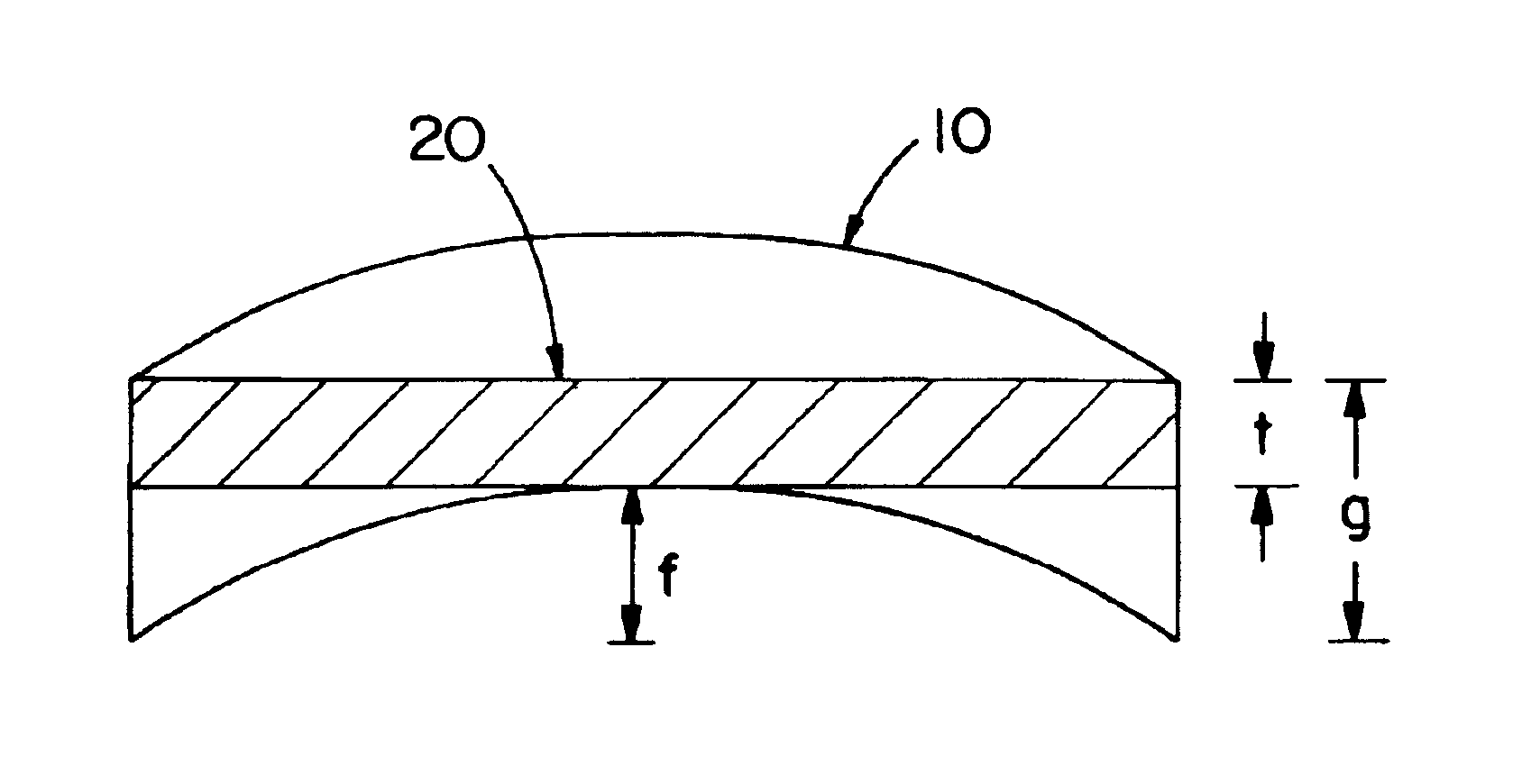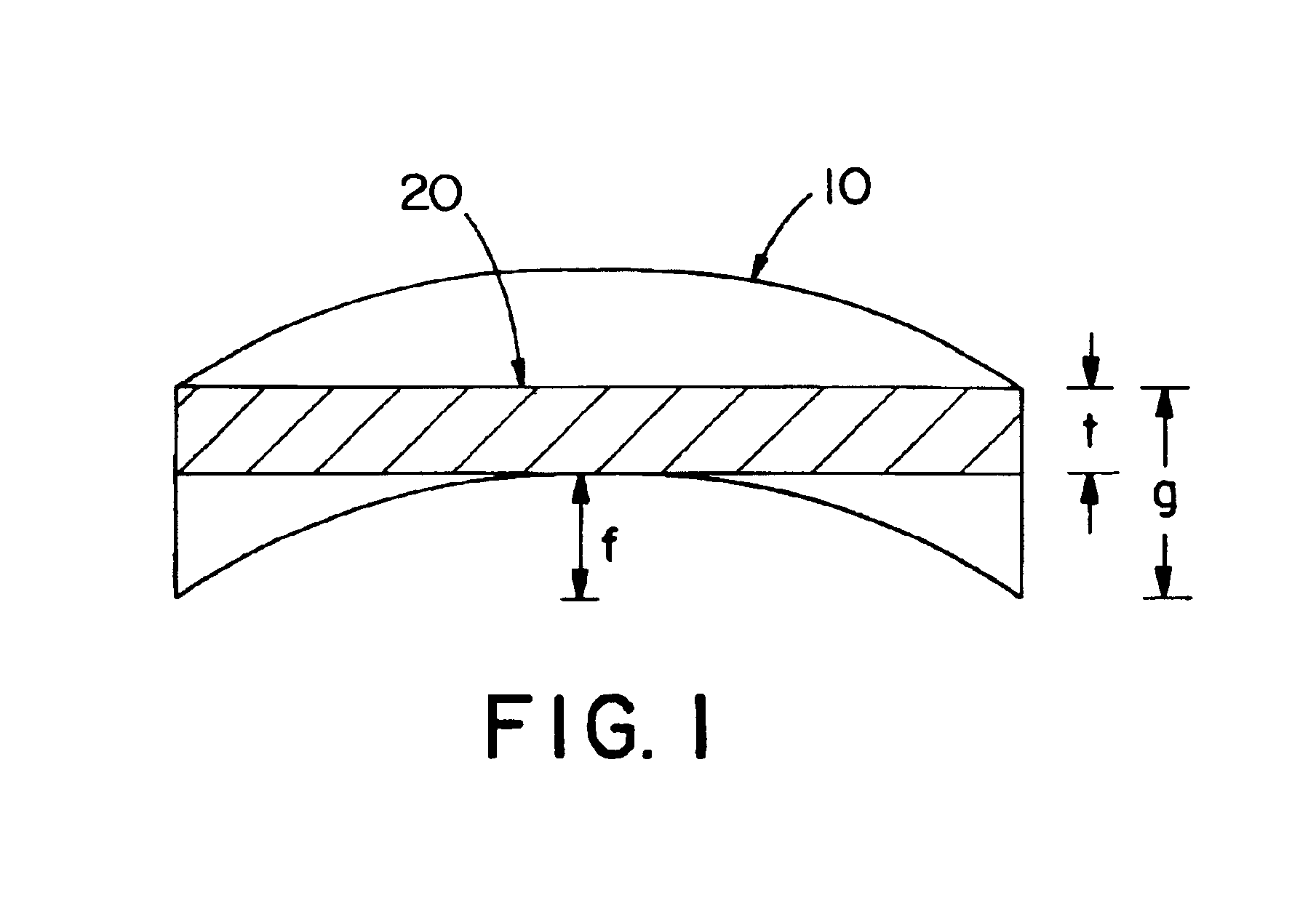Method of forming metal blanks for sputtering targets
a metal blank and target technology, applied in the field of forming metal blanks, can solve the problems of excessive cost of process, excessive amount of low-value grinding scrap called swarf, and significant difficulties in achieving the effect of cost-effective metal products and avoiding the costs of time, labor and lost metal materials
- Summary
- Abstract
- Description
- Claims
- Application Information
AI Technical Summary
Benefits of technology
Problems solved by technology
Method used
Image
Examples
example 1
[0058]FIG. 1 shows a rolled metal plate (10) having an as-rolled or as-level-rolled flatness designated “f” and an initialized gauge thickness of “g.” A planar sputtering target (20) of finished thickness “t” can be produced. Generally, the relationship between initial thickness with respect to initial flatness and finished thickness is
g=t+(2f+0.005″)
[0059]The amount of scrap generated in producing a target 20 from plate 10 can be calculated using the following formula:
Vs=(2f+0.005″)·AT·ρTa AT=target area ρTa=0.060 lbs / in3
and the scrap credit can be calculated using the following formula:
Cs=Vs (Ms) Ms=marked value of scrap Vs=volume of scrap Cs=Scrap credit
[0060]Consider the manufacturing costs of a tantalum blank 14″ in diameter (154 in2) and 0.250″ thick, and standard plate manufacturing cost (Cst) of $250 / lb.
[0061]Case 1 Double disc grinding of as level rolled blanks to 0.005″ flat[0062]Assume: initial flatness f=0.075″[0063]grinding cost=Cgm=$50 per disc[0064]grinding swarf valu...
PUM
| Property | Measurement | Unit |
|---|---|---|
| flatness | aaaaa | aaaaa |
| flatness | aaaaa | aaaaa |
| flatness | aaaaa | aaaaa |
Abstract
Description
Claims
Application Information
 Login to View More
Login to View More - R&D
- Intellectual Property
- Life Sciences
- Materials
- Tech Scout
- Unparalleled Data Quality
- Higher Quality Content
- 60% Fewer Hallucinations
Browse by: Latest US Patents, China's latest patents, Technical Efficacy Thesaurus, Application Domain, Technology Topic, Popular Technical Reports.
© 2025 PatSnap. All rights reserved.Legal|Privacy policy|Modern Slavery Act Transparency Statement|Sitemap|About US| Contact US: help@patsnap.com



